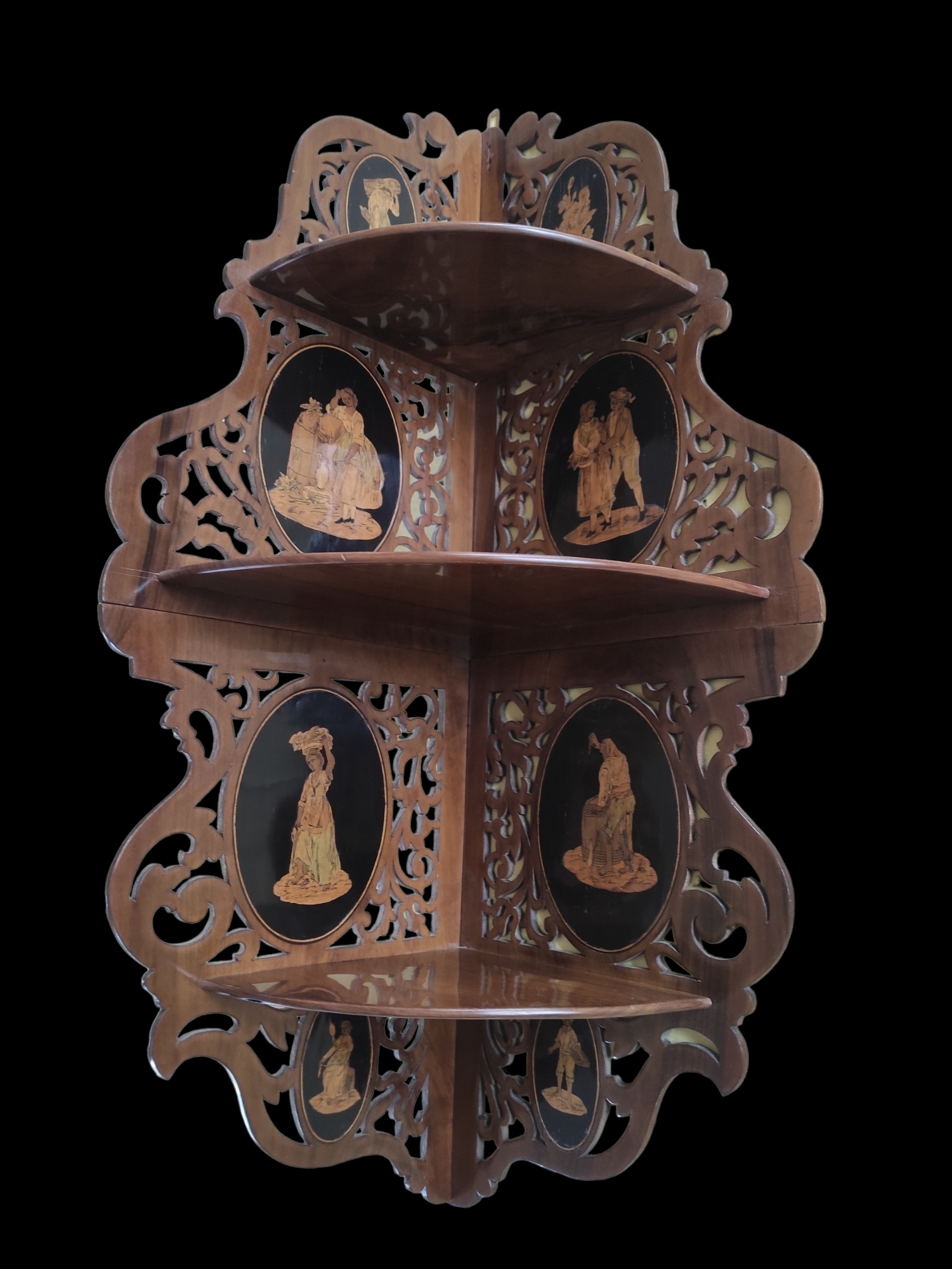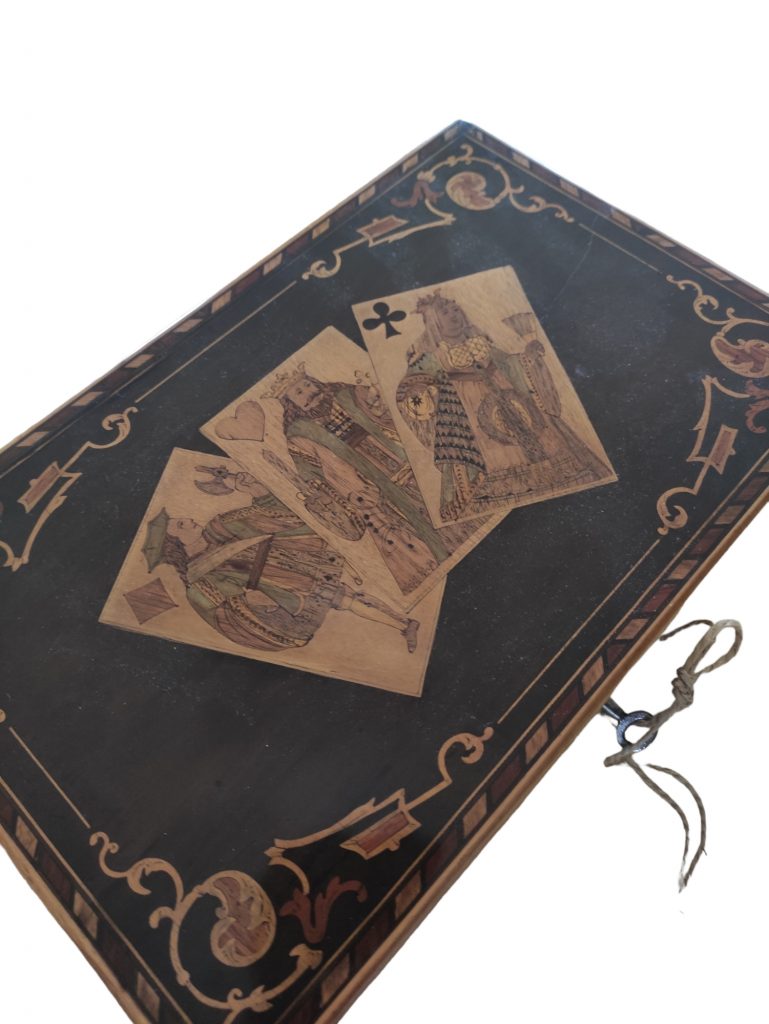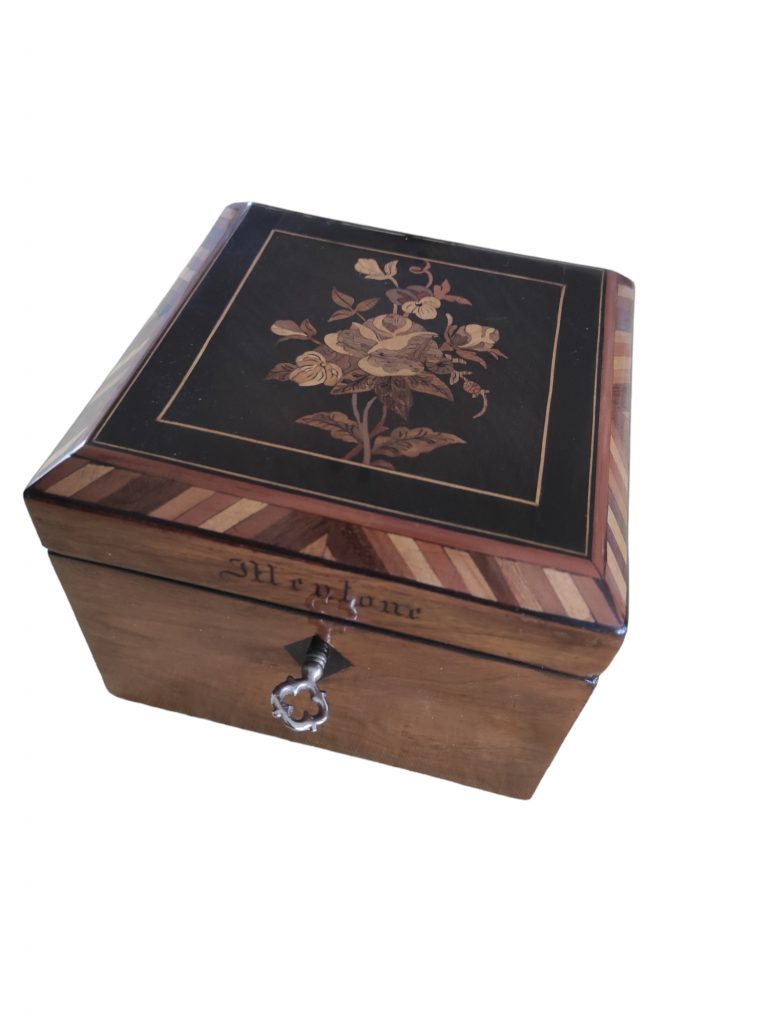
Marqueterie de Nice
10/12/2022
Ateliers d’Ébénisterie et tabletiers niçois.
Avant le rattachement de Nice à la France en 1860, de riches hivernants choisissent la ville pour son climat tempéré. L’essor d’un tourisme aisé, en quête de « souvenirs » de qualité, contribue à développer sans cesse des techniques de production afin de réaliser des objets et petits meubles d’une étonnante qualité.
La culture des oliviers et des agrumes offre à Nice l’opportunité de développer un artisanat d’art dont la renommée franchira très vite les anciennes frontières du Comté.
A partir de 1822 un artisan niçois : Claude Ginello crée un atelier dont le peintre romain paul-emile Barberi ainsi que son frère Michel ange Barberi Mosaiste apportent des modèles .
L’atelier fut repris par ses enfants et compta jusqu’à 40 ouvriers marqueteurs.
Très vite des ateliers s’installent dans les nouveaux quartiers comptant jusqu’à 200 ouvriers au sein d’un même atelier. Peintres, ébénistes, goupilleurs, serruriers et tapissiers produisent de véritables œuvres d’art.
Les noms des artisans étaient les suivants :
H.Bertho
E. Cagnoli
J Giando
L ;Dizo
H Lacroix
La marqueterie niçoise est née.
La structure des objets est en bois d’olivier, déjà utilisé sous la Renaissance Italienne, pour sa couleur et son veinage si particulier. Les décors sont conçus à partir des arbres locaux :
Arboisier de l’esterel
Bruyere
Buyis
Chene
Figuier ( tein en noir)
Racine de Fustei ( montagne autour de nice)
Jujubier- murier olivier
Neflier noyer oranger de manton
Caroubier de villefranche
Charme
Citronnier, cypres
… auxquels s’additionnent parfois des bois de rose, de violette, d’amarante…importés pour compléter la gamme chromatique.
La ville de Sorento en Italie fut influencée par ces travaux.
Le plein essor de cette activité se manifesta de 1840 à 1870.
La production fut essentiellement faite de petits objets tels que des boites à thé, casiers à musique, cave à liqueur, albums, buvards, plateaux, boutons de manchettes.
En 1860, Napoléon III acheta une table à Claude Ginello pour le château des tuileries .
Dès 1890, la marqueterie traditionnelle va être supplantée par des productions de boites peintes aux inscriptions à l’encre de Chine. Le changement de clientèle, son goût pour de petits objets, souvenir à vil prix, sont les causes de nouvelles productions plus simples d’exécution.

